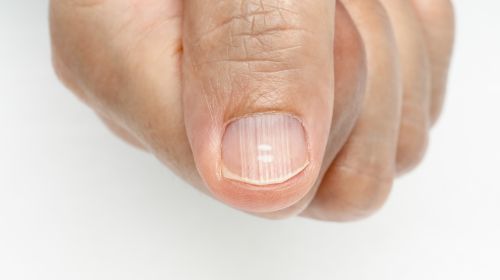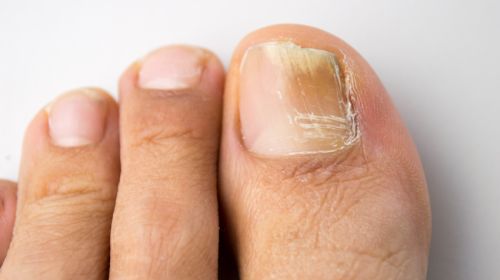Many women and increasingly men also treat themselves to foot care at the beautician. Less well known is the profession of podiatrist, who cares not only about the beauty, but above all about the health of the feet. That happens in medical pedicure.
Podiatrists need special training
Podiatrists take care of the care and health of the feet. The Podiatrists Act has existed in Germany since January 2002, which precisely delimits the occupational titles relating to foot care. According to this law, "medical podiatrist" and "podiatrist" may only call themselves those who have completed a two-year full-time education followed by a state examination. The podiatrist, still relatively unknown in Germany, is derived from the Greek (podos for foot).
Cosmetic versus medical foot care
What distinguishes a podiatrist from the "normal" foot care that is offered in many cosmetic studios? Cosmetic foot care includes purely preventive and nourishing measures. Above all, this includes the professional cutting and cleaning of nails and the removal of thickened nails and skin (cornea) that have no pathological cause, such as nail fungus.
The cosmetic podiatrist removes corns, carries out nail correction and foot massage as well as advice on recommended care products. Last but not least, it beautifies the feet, for example with a nail polish.
Podiatrist: Trained in medical foot care
A podiatrist, on the other hand, not only cares for the feet, he also recognizes changes in the skin and nails that require medical treatment in good time. He is, so to speak, the mediator between patient and doctor and often works closely with orthopedic shoemakers and physiotherapists.
Due to his special training, for example, a podiatrist is able to remove warts professionally, to make pressure relief aids (orthoses) and toes toe ingrown nails. They are trained to treat nail mycoses and to manufacture artificial nail replacements (nail prostheses).
The podiatrist Margot Körber, who runs a medical foot care practice in Warnitz in the state of Brandenburg, reports: "In my practice I look after many diabetics. Because of their illness, they suffer from foot problems more often than other people, especially from foot or nail fungus. I work closely with doctors, especially diabetes specialists, and as a podiatrist, as a podiatrist, we can bill diabetic services directly with health insurers because of our extensive two-year training."
Treat nail fungus properly
Lifeline / Wochit
Pedicure at home or would you prefer to see a podiatrist?
Medical podiatrist pedicure is appropriate for certain groups of people. These include, for example
Diabetics: They are at risk for diabetic foot syndrome. The constantly increased blood sugar level causes damage to nerves and circulatory disorders, the skin is dry and cracked and prone to wounds and injuries.
Patients with rheumatic diseases, misaligned feet and circulatory disorders (for example with venous diseases)
People with excessive corneal production
People with ingrown or curled toenails, warts, or corns
Patients with nail fungus and athlete's foot
In the case of nail fungus, podiatrists should take care of their feet in other aspects of foot care at home. Grinding and polishing devices for nail care, which are used in medical foot care, usually have very high speeds – between 30,000 and 40,000 revolutions per minute. The commercially available devices for manicure and pedicure, on the other hand, work much slower, for example with only about 5,000 revolutions per minute. As a result, the processing of the nails takes a very long time, there is much more heat and the risk of injury increases.
Optimal nail care: how it works
Lifeline / Wochit
Disinfection is essential when it comes to nail care
Ilka Hamann, who runs a podiatric practice in Kiel, says: "Healthy people can certainly use such handheld devices without hesitation, especially when traveling or traveling, they are very practical. But if you have nail fungus, you should stay away from it in this case his nails are always processed at home with the same device and no disinfection measures are carried out, as we do in practice, he easily carries the fungus from one nail to the next. "
"We podiatrists also have completely different options and requirements to make our devices and aids germ-free," explains Ilka Hamann. “When it comes to instruments such as pliers, scissors and tweezers, we are obliged to disinfect them in a steam sterilizer. All viruses, fungi and bacterial spores are killed, the instruments are completely germ-free, so that they could be used practically for surgery. "
For other areas of application such as the disinfection of treatment chairs or skin and wounds or for ceramic cutters that cannot be steam-sterilized, podiatrists use special disinfectants that have been approved for this by the Robert Koch Institute or the German Society for Hygiene and Microbiology. Towels and documents are washed with a special disinfectant detergent. All measures for skin, device, instrument and surface disinfection must be listed in the hygiene plan and can be viewed by the patient.
How do I find a podiatrist?
Anyone who notices unusual foot problems and possibly pathological changes on the feet is well advised to consult a podiatrist instead of cosmetic foot care. A corresponding podiatrist in your area can be found on the website www.podologenliste.de after entering the zip code or via our doctor search.


